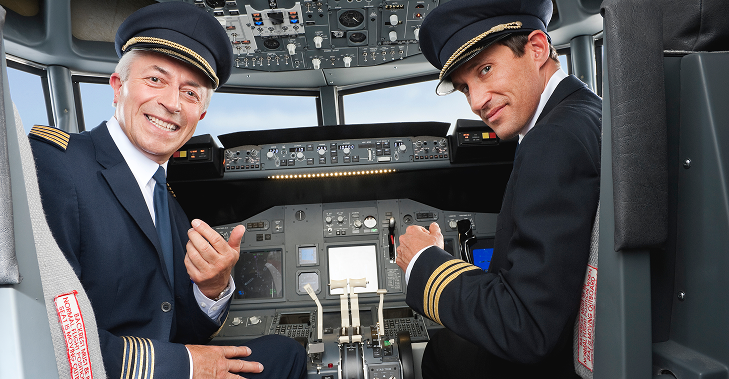A Simulator Flight Instructor (SFI) is an aviation professional who trains pilots using Full Flight Simulators. They guide students through various scenarios, such as emergency procedures and complex maneuvers, that are difficult or dangerous to practice in real aircraft. The instructor ensures trainees understand aircraft systems and how to handle different situations.
These instructors also focus on improving decision-making, situational awareness, and cockpit resource management. Their role is crucial in preparing pilots for real-world flying by providing a safe environment where they can learn and make mistakes without risk.
The process of becoming a Simulator Flight Instructor involves meeting specific qualifications, obtaining the necessary instructor certifications, and gaining hands-on experience with flight simulators. Each of these steps is critical to ensuring that a candidate is equipped with the knowledge and skills needed to effectively teach and guide pilots in simulated environments.
The first step in becoming a Simulator Flight Instructor is to meet the basic qualifications. Typically, this includes having a Commercial Pilot’s License (CPL) or an Airline Transport Pilot’s License (ATPL), depending on the level of training you want to deliver. Candidates should also have a strong understanding of flight theory, aviation regulations, and the operational aspects of aircraft. A solid background in aviation allows future instructors to confidently teach students and address their questions during training sessions.
In addition to the flight licenses, many flight schools and training centers may require instructors to have specific medical certifications to ensure they are fit to fly and teach. Basic qualifications also include a good level of communication and interpersonal skills, as teaching involves explaining complex concepts clearly and effectively. It’s essential for a Simulator Flight Instructor to be able to explain aviation concepts in an understandable manner, while also being patient and adaptable to different learning styles.
Once the basic qualifications are met, the next step is to obtain instructor certification. To become a Simulator Flight Instructor (SFI), aspiring instructors must complete additional training and exams, often through an accredited flight training organization. This certification ensures that the individual has the necessary skills and knowledge to teach flight procedures effectively.
In many cases, instructors are also required to undergo a teaching methodology course, which helps them understand how to structure training sessions and evaluate the progress of their students. Instructor certification also involves passing a series of written and practical tests to demonstrate proficiency in both flying and instructional techniques. This process ensures that the individual is qualified to train others in a safe and effective manner.
The final key step to becoming a Simulator Flight Instructor is to gain experience using flight simulators. This is essential because teaching in a simulator requires a different skill set than flying a real aircraft. Simulator instructors need to be proficient in operating flight simulation software, understanding its limitations, and using it to create realistic flight scenarios. Instructors must also know how to troubleshoot technical issues that may arise during a session, ensuring smooth training experiences for students.
To gain experience, aspiring instructors should spend significant time practicing in flight simulators themselves. This can include working as a co-instructor or observing experienced instructors to learn the best practices. Additionally, many simulator training centers offer mentorship opportunities where newcomers can gain practical teaching experience under the guidance of senior instructors. The more time spent in a simulator, the more effective an instructor will be in training others, making this hands-on experience an essential part of the process.

The process of becoming a Simulator Flight Instructor involves meeting specific qualifications, obtaining the necessary instructor certifications, and gaining hands-on experience with flight simulators. Each of these steps is critical to ensuring that a candidate is equipped with the knowledge and skills needed to effectively teach and guide pilots in simulated environments.

Global Training Aviation offers specialized training programs for those looking to become Simulator Flight Instructors (SFI). We provide a comprehensive Initial SFI Course designed to equip candidates with the essential skills and knowledge to effectively teach in flight simulators. This course covers both the theoretical and practical aspects of simulator-based training, including the use of advanced flight simulation technology, instructional techniques, and flight safety protocols. Participants will learn how to create realistic training scenarios, manage emergency procedures, and ensure a productive learning environment for students.
In addition to the Initial SFI Course, Global Training Aviation also offers a Refresher SFI Course for instructors looking to maintain or enhance their simulator teaching skills. This course is ideal for those who want to stay updated with the latest industry standards, regulations, and simulator technology. The Refresher course helps experienced instructors improve their training techniques, refine their ability to handle advanced scenarios, and ensure they are up to date with the latest aviation trends and safety protocols. Both courses are designed to ensure that our instructors are highly proficient and prepared to provide top-quality training to aspiring pilots.
Gracias a esta estructura, la formación A320 en Bogotá con GTA permite a los pilotos adquirir no solo la licencia, sino también las competencias operacionales necesarias para incorporarse a aerolíneas nacionales e internacionales.
The salary and career outlook for Simulator Flight Instructors can vary based on factors like location, experience, and the type of training organization. On average, in the United States, a Simulator Flight Instructor can expect to earn between $50,000 and $80,000 per year, with the potential to earn more with additional experience or specialized certifications. In some cases, salaries can exceed $100,000 annually for instructors with advanced qualifications or those working for large aviation companies.
In Europe, the salary range for Simulator Flight Instructors is generally between 45,000€ and 70,000€ per year, depending on location and experience. In certain countries or high-demand regions, salaries can go up to 90,000€ or more.
The career outlook remains strong, with growing demand for qualified instructors as the aviation industry expands and aviation training increasingly relies on advanced Full Flight Simulators.